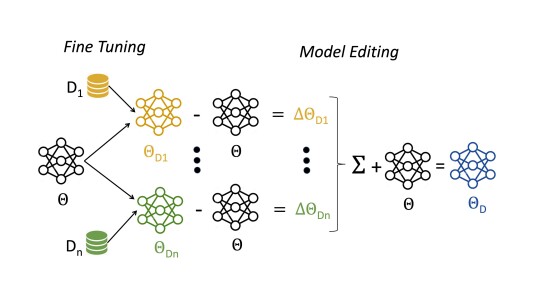At ICASSP 2021, the Amazon text-to-speech team presented two new papers about synthesizing speech from text with contextually appropriate prosody — the rhythm, emphasis, melody, duration, and loudness of speech.
Text-to-speech (TTS) is a one-to-many problem where a single piece of text may have more than one appropriate prosodic rendition. Determining the prosody of a piece of text is a non-trivial problem, but it can increase the naturalness of synthesized speech considerably.
The approaches we describe in the two papers share a general philosophy, but the ways in which they tackle the problem are fundamentally different.

One of our papers, “Prosodic representation learning and contextual sampling for neural text-to-speech”, introduces Kathaka, a model trained using a novel two-stage approach. In the first stage, the model learns a distribution of the prosody of all the speech samples in the training data by exploiting a variational learning approach. In stage two, the model learns to sample from this distribution based on semantic and syntactic characteristics of the texts associated with the speech samples.
According to listener studies using the industry-standard MUSHRA (multiple stimuli with hidden reference and anchor) methodology, the speech produced by Kathaka improved over the baseline TTS model by 13.2% in terms of naturalness.
The other paper, “CAMP: A two-stage approach to modelling prosody in context”, introduces CAMP, the context-aware model of prosody. Like Kathaka, CAMP is trained using a two-stage approach. In the first stage, CAMP learns a representation of prosody for every word of each speech sample in the training data in a non-variational way. In stage two, the model learns to predict these learned representations based on the semantic and syntactic characteristics of the associated texts.
According listener studies with MUSHRA evaluations, the speech produced by CAMP improved over the baseline TTS model by 26% in terms of naturalness.
Kathaka
Since TTS is a one-to-many problem, where the same text can be said in different ways, TTS models often synthesize speech with neutral prosody. This decreases the naturalness of synthesized speech, as there is no relation between the prosody and what is being said.
Kathaka’s two-stage learning approach tackles this problem by exploiting the semantics and syntax of the text. The Kathaka architecture has two encoders: one, the reference encoder, takes a mel-spectrogram (a snapshot of the frequency spectrum) of the speech signal as input; the other takes the associated text, represented as a sequence of phonemes, the smallest units of speech.
Based on the mel-spectrogram, the reference encoder outputs the parameters of a prosody distribution (the mean and variance, µ and σ in the diagram above), and a sample is selected from that distribution. This sample, along with the phoneme encoding, is used to synthesize a new mel-spectrogram. The model is an autoencoder, meaning that it’s trained to output the same mel-spectrogram given to the reference encoder as input.
At inference time, of course, mel-spectrograms aren’t available as input, as they are to be synthesized. Thus, in step two, we train “Samplers”, which predict the parameters of the prosody distribution directly from the text.

To encode the text, we use a BERT model, which is pretrained to provide contextual word embeddings — representations of words as vectors in a multidimensional space — that capture semantic and some syntactic information about the text. We also apply graph neural networks to syntax parse trees of the text, to produce representations of just the texts’ syntactic information.
From these representations, the Sampler learns to predict the parameters of the prosody distribution. At inference time, a sample from this distribution is used in place of the sampled point from the reference encoder to synthesize the mel-spectrogram.
In order to evaluate the efficacy of Kathaka, we compared it to our neural-text-to-speech (NTTS) baseline and showed a statistically significant 13.2% increase in naturalness.
CAMP
CAMP uses a similar two-step approach to training, but instead of learning a distribution of prosodies, it learns specific mappings between individual words and prosodic representations, conditioned on semantic and syntactic features of the text.
In stage one, CAMP learns word-level representations of prosody using a word-level reference encoder. This encoder takes a mel-spectrogram as input and produces a word-level representation of the speech sample’s prosody. This word-level representation is then aligned with the phonemes that constitute the word, which, again, are encoded by a separate encoder. Both sets of features are then used to synthesize a mel-spectrogram as output, and the training target is the same mel-spectrogram that the reference encoder took as input. Through this process, CAMP learns word-level prosodic representations.

In stage two, CAMP uses semantic and syntactic information from the input texts to predict the word-level prosody representations learned in stage one. To encode the text, we again use BERT embeddings, and we also use word-level syntax tags such as (1) part of speech (POS); (2) word class (“open” words such as nouns or verbs, which can proliferate indefinitely, versus “closed” words such as pronouns and articles, which are fixed and limited); (3) noun structure; and (4) punctuation structure. This information is then used to predict the word-level prosody representations learned in stage one.
As with Kathaka, during inference, we replace the prosody representations from the reference encoder with the representations predicted from the syntactic and semantic content of the input text.
Compared to our NTTS baseline, CAMP showed a statistically significant 26% increase in naturalness.




